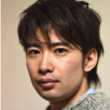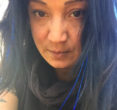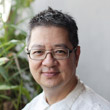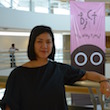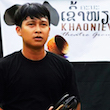Home » ricca ricca*festa Event Reports » Hazel Gutierrez
ricca ricca*festa 2016 Event Report
ricca ricca*festa, hosted by ACO Okinawa and Japan Foundation Asia Center, is a yearly festival of performances and works for young audiences. In July 2016, the month-long festival featured a variety of works from different countries, most of which are by companies from European countries involved in Belgian TYA, this being part of the Japan-Belgium Friendship Commemoration. The variety of works include straight plays, devised works, song and dance numbers, and non-verbal performances including rituals, movement, mime, circus, or a combination of some, if not all of these types. Performances presented were those that ‘pushed boundaries’ or that ‘redefined’ the whole concept of theater for young audiences, catering to both old and new audiences.
This year, I was fortunate enough to have been invited by ACO Okinawa and Japan Foundation Asia Center to represent Tanghalang Pilipino, introducing its works in the Asian TYA Networking, as well as to be part of the Philippine delegation contributing to the discussion of current trends and practices in our country, alongside Ms. Ness Roque-Lumbres (Sipat Lawin Ensemble), Mr. Sigmund Pecho (Teatrong Mulat ng Pilipinas), and Ms. Teta Tulay (Anino Shadowplay Collective).
Festival Components:
- Performances and Curated Works
- Workshops
- Forums and Networking (Asian and Belgian TYA)
Performance & Curated Works
Out of a total of 31 productions, the following are 13 productions I was able to watch during the festival: Good Night Sleep Tight (Teater Tre, Sweden), The Dream of Yellow Sock (Dalija Acin Thelander, Serbia/Sweden), The Story of the Little Gentleman (ACO Okinawa, Asian Co-Production), Nox (L’Anneau Theatre, Belgium), Leo (Y2D Productions, Germany/Canada), Faithful Elephants (Puppet Theater HITOMI-ZA, Japan), A Mano (El Patio Teatro, Spain), Okinawa Sansan (ACO Okinawa, Japan), Raw (kabinet k, Belgium), Les Miserables (ACO Okinawa, Japan), Hogiuta (Tokyo Kandenchi Company, Japan), For the Sake of Someone (ACO Okinawa, Japan), and Wakatta-san’s Cookies (KAAT Kanagawa Arts Theatre, Japan).
Of these 13 performances, Wakatta-san’s Cookies (KAAT Kanagawa Arts Theatre, Japan) and Hogiuta (Tokyo Kandenchi Company, Japan) were two of the most memorable performances for me. Both shows were in Japanese, and no translations were provided. Even so, both did very well in telling the story through clear visuals (set, costumes, and props), effective performances by the actors (facial expressions, great ensemble work), and brilliant directions (theater elements were merged well together, very clear concept and translation from page to stage).
These two performances, along with Leo (Y2D Productions, Germany/Canada) and Raw (kabinet k, Belgium), defined what ricca ricca*festa is all about: A means to expose the young (and the old) audiences to the vast emotions and sensibilities all humans ought to experience and learn through theatrical works. The vastness of these works range from works where audiences were asked to play, act, and think as kids, to works where audiences were asked to think critically about topics on war, death, destruction and resilience, and to works where audiences were challenged to think out of the box, to think the unimaginable.
Asian TYA Program
Part of ricca ricca*festa this year is the Asian TYA Forum, a joint project by ACO Okinawa and Japan Foundation Asia Center. The forum aimed to foster dialogue and collaboration between South East (SE) Asian Countries and other participating countries in the festival, as well as to connect and continue these cultural dialogues, create a map and, in a sense, a socio-cultural understanding of TYA practices is SE Asia.
The Asian TYA program is divided in two parts: the ATYA Networking and the ATYA Open Forum.
Briefly, the ATYA Networking (Part 2 of the ATYA program) was done to introduce each representative to the rest of the participants through a four minute presentation of individual company profiles and their TYA activities. Tanghalang Pilipino Foundation, Inc. (TP), the theater company which I represent, unlike most companies from other countries, does not solely focus on creating or producing performances for very young audiences. In fact, most performances done by TP cater to young adults and/or mature audiences, mostly senior high school, college students, or professionals and artists in the Philippines. Nonetheless, TP’s strength in TYA practices lies in its audience development activities through community theater workshops and performances, and theater for development (T4D) activities in partnership with non-government organizations (NGO) including UNICEF Philippines.
It was interesting for me as an artist to listen to individual company profiles and activities, to know more about what they do to promote Theater for Young Audiences in their respective countries, and more importantly, how these practices relate to our own practice in TP and in the Philippines as a whole. It was fascinating to know that most of the companies who participated in the forum really focus on creating productions for TYA, and that there are a number of festivals in South East Asia that highlight TYA productions. It just goes to show how vast the interest in TYA is in the region and how great the possibility of collaborations and exchanges among these companies, organizations and individuals practicing TYA in SE Asia, Asia, and other regions in the world.
ATYA Open Forum
The first and, for me, one of the most important part of the Asian TYA Program is the ATYA Open Forum. In the forum, participants were asked to discuss current TYA trends, evident and emerging practices, challenges, and possible suggestions to continue and enhance TYA practices in the region.
The following were among the many challenges mentioned in the discussion:
Finance and Funding Support
- Non-profit, non-stock organizations are forced to sell shows at high price to balance out production costs.
- Companies have limited connections with or knowledge on Institutions that offer funding support for the arts; Institutions who invest in the value of the arts be it traditional or non-traditional TYA productions.
Quality vs Profit
- “Fly-by-night” productions sacrificing quality over quantity and profit; producing low-quality TYA productions, selling bulk tickets at very cheap rates, all for the sake of earning without giving importance to the type and quality of productions being shown to the audience.
- Shopping mall shows and TV culture jeopardizing TYA value.
- Companies are forced to produce shows based on marketability and not based on aesthetics or social relevance.
Stigma and Limiting Boundaries
- Stigma of TYA as “not serious enough” just because they are intended for young audiences.
- Traditional vs Contemporary practices; a sample shared by Hugh Brown of Cambodia where their government tends to support traditional arts for tourism, and offers nothing new for their local young audiences.
- Competition among countries; Some countries tend to “compete” for funding support limiting them to think of festivals as platforms for competition rather than as avenues for sharing resources.
Accessibility and Audience Development
- Young audiences are not given enough exposure to TYA productions.
- TV vs Theater Culture; The convenience brought about by television and the internet to the masses where anyone can choose what one wants to see (selective attention) in the comfort of their own homes; whereas watching a theater production entails traveling to the venue, purchasing tickets, etc. Thus, the audience’s knowledge on performing arts is limited to what is shown on television and social media, for that matter.
- Audience development in terms of increasing number of children audiences.
- Audience development and education; TYA acts as means of educating the audiences on relevant social issues.
- Building the next generation of “thinking” and “questioning” audiences.
Summary
As artists and community workers, each of us has a role to actively and continuously create works and performances with the goal of enriching the sensibilities of young audiences, as well as audiences of different age and culture.
Festivals like ricca ricca*festa play vital roles and responsibilities in bringing to the audience productions of different shapes and sizes, highlighting values shared by communities and individuals all over the world.
It is through these festivals that artists and audiences are able to connect cultures through performances and exchanges, both learning from each other and growing from these experiences. These festivals serve as platforms for dialogue and artist exchanges, where new works are imagined, new friendships are born, and the future for TYA is paved and developed through collaborations, co-productions, and networking.
Notes On Theater for Young Audiences
ricca ricca*festa and the productions and performances considered part of this genre have taught me a lot about Theater for Young Audiences.
For one, TYA doesn’t necessarily mean productions only for kids, or teens, but for all ages to enjoy and participate in. As Mr. Shimuyama phrased it: “If you (adults) do not enjoy the performance, the kids (young audiences) won’t enjoy it as well.”
More importantly, the key to developing performances for Young Audiences is to not overly protect them, but to “shower them with all the emotions they can experience. If you don’t feed their sensitivity, their sensitivities won’t grow” as Mr. Shimuyama explained during our last festival meeting. By exposing the young ones to theater, we can hone them as individuals, push their creativity and critical thinking, and let them go and explore the world beyond what they see in television and cinema.
ricca ricca*festa also reminds me of the importance of the community in the creative process: that theater belongs to the community and it is through theater that parents and their children get to share similar emotions and experiences.
Lastly, there are two main provocations I would hold on to when creating works for Young Audiences in SE Asia:
- ‘What can we do for the children in Asia?’
- ‘What types of productions do we show our children, specifically in Asia?’
Sustainability
After ricca ricca*festa, it has become our role to help create a sustainable eco-system that goes beyond monetary profit, where the main focus is education and social transformation, and creation of productions of context and relevance to the audience we are all trying to reach. To sustain and continue exchanges, dialogues and collaborations.
Comments and Suggestions
Below are some suggestions I have gathered from discussions during the TYA Open Forum and the last day of TYA meeting with the rest of the ATYA participants.
- Study tours in festivals.
- Workshops in production creation, backstage tour, dress technical rehearsal (DTR) preview and interview after the performance for a more in-depth discussion and sharing among artists all over the world.
- Ending the gaze: closing the gap between performers and observers; go from stage to backstage.
- Maximize ways of learning from each other.
- TYA networking first (introduction of different performing arts groups, spaces, and funding agencies) then off to the open forum.
- Artist residencies should be part of festivals. This could offer platform for practicing artists to know more about places, art practices, and artists and community experiences.
- Mentorship.
- Inter-company, Inter-artform collaborations.
- Funding agencies funding different collaborations; possible exchange of directors to enrich both cultures.
Hazel Joy R. Gutierrez
Resident Production Manager
Tanghalang Pilipino Foundation, Inc.






